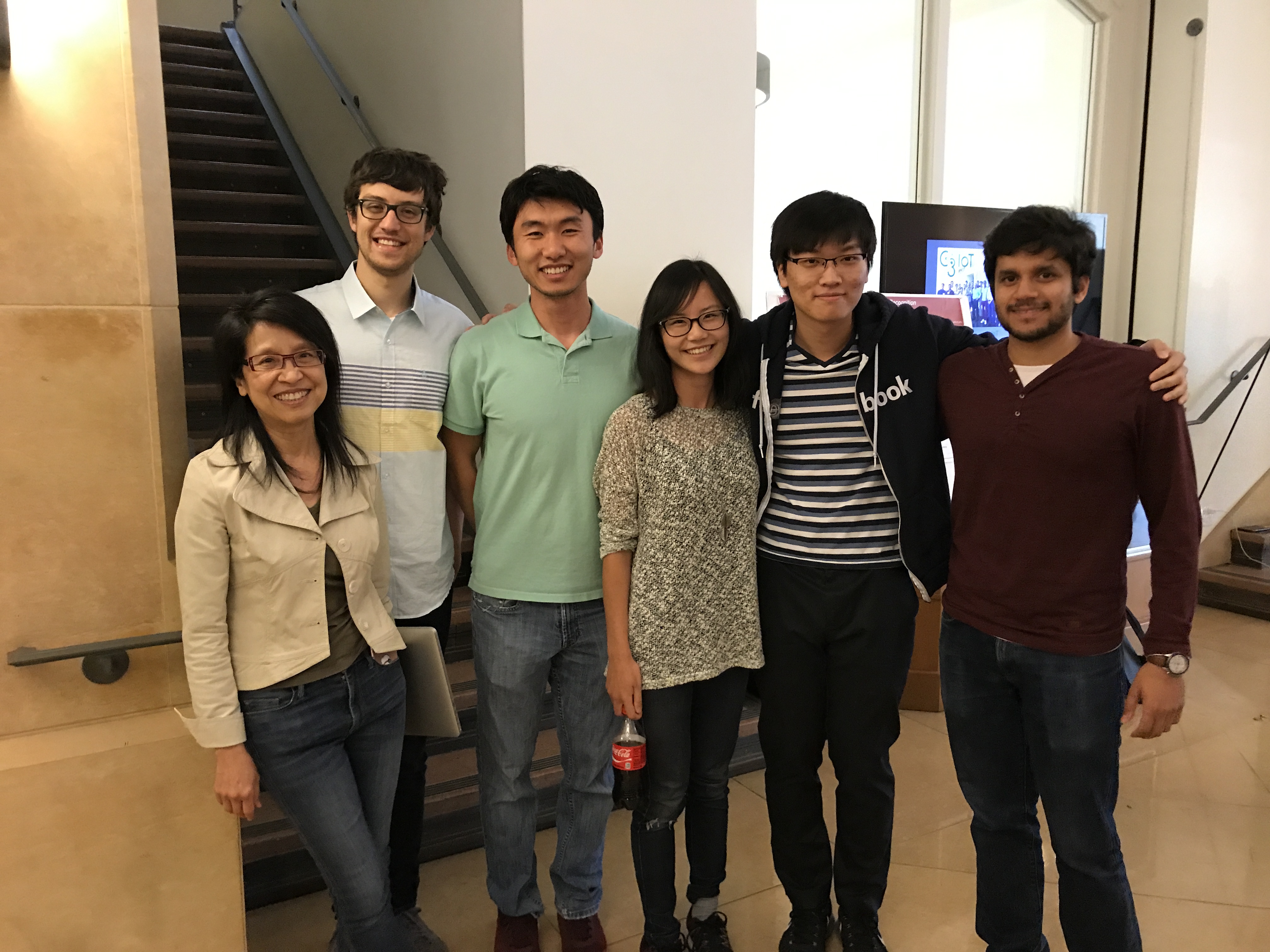Projects
Best project
Speaker Recognition (Quinlan Jung, Michael Xing, Prasad Kawthekar, Junwon Park)
Understanding who is speaking is a crucial part of a multi-user virtual assistant. This project implements a multi-user speech interface that recognizes the speaker and maps the command to his virtual assistant. Applications include customization, parental control, as well as meeting transcriptions and the ability for a VA to sit passively in a conversation and react when called.

Best video
Data Visualization for Virtual Assistants (Michael Fischer)
Voice, the primary interaction modality of commercial VAs such as Echo and Google Home, is a great form of input, but not the best output modality for all answers. This project explores how a virtual assistant can produce semantically rich data visualizations on a large screen.
Virtual Assistant Infrastructure
SNER: Specific (Snorkel) Named Entity Recognition for Almond (Brian Higgins)
Named Entity Recognition is a well-studied problem in the NLP literature, but the commonly used 5 classes (Person, Organization, Location, Misc, Other) are not sufficient for virtual assistants. This project explores the quick creation of a dataset to train a state-of-the-art recognizer for a new class of entities.
Mango: Location-Aware Assistant (Derin Dutz)
Location is a central concept in a mobile virtual assistant. As people move about, the virtual assistant moves with them, knows where they are, and reacts accordingly. This project explores the infrastructure and APIs to provide continuous tracking and support numerous use cases.
M-Almond: Automating Multi-Party Tasks with End-User Programmable Virtual Assistants (Rakesh Ramesh, Giovanni Campagna, Silei Xu, Michael Fischer)
How does a doctor get access to a patient’s IoT information? How can one monitor his parents security camera while they are away? M-Almond lets users specify these tasks in natural language, and automatically asks for permission, all without divulging personal information to a 3rd party.
Domain Specific Assistants
ABM (Almond Bike Market): A Marketplace Virtual Assistant Augmented by Collaborative Information Sharing (Luke Chen, Silei Xu)
Every Stanford student has a checklist of tasks to do on his first days, and high on that checklist is buying a bike. ABM improves the experience of buying and selling bikes, with a marketplace that can be queried in natural language, and the ability to connect buyers and sellers through a virtual assistant.
Annie: a Social Virtual Assistant for Shooting (Alex Leishman, Megan Wilson)
Can a virtual assistant help with the sport of shooting? This project explores a virtual assistant that uses computer vision to let people track their shooting performance at ranges, with regulatory targets, and share it with friends.
VIRA: A Virtual Assistant for Gamers (Ikechi Akujobi, Matthew Chen, Chris Salguero)
Gaming, and specifically gaming in Virtual Reality, is all about immersion. Can we use a voice virtual assistant to help us with tasks, such as searching for walkthroughs online, that would otherwise interrupt the immersion?
NutriCoach: Tracking Nutrition with A Virtual Assistant (Katy Shi, Trina Sarkar, Ana Caro Mexia, Shawn Fenerin)
This project helps us manage our diet and find foods that satisfy our dietary restrictions. It provides a natural language interface to log meals, and it automatically learns recommendation for next meals based on the right calorie and protein budget, as well as user preferences.
Milo: Assistant for Anxiety (Clay Jones, Kevin Rakestraw, Andrew Declerck)
Many people, including students, are affected by chronic anxiety and anxiety attacks. This project helps them track and visualize their behavior over time, recorded from a wearable device (FitBit) and by answering questions. We perform an exploratory study, where one user is followed for 45 days, and report on the behavioral correlations we observe.
Virtual Assistants for Patients and Doctors (Jason Liu, Stephanie Palocz, Albert Chu)
More than 40% of Americans suffers from a chronic disease, and about 1 in 12 suffers from asthma. Managing these diseases requires constant monitoring and consistent compliance with medication. This project explores the use of a virtual assistant based on M-Almond to let the doctor and the patient share information automatically, both collected from IoT devices and manual input from the patient.